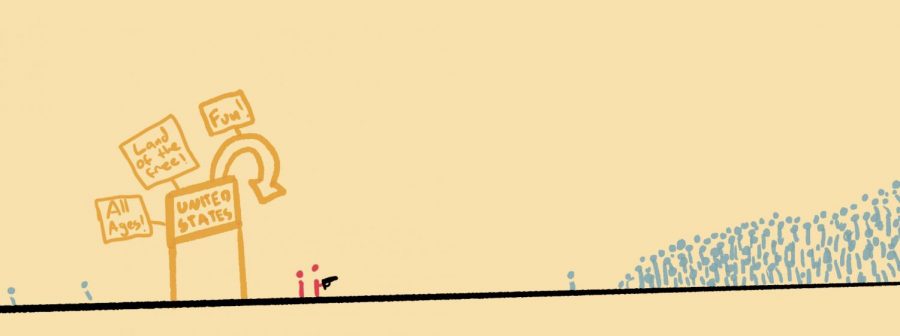Haitian Immigration Crisis Continues with Biden
October 30, 2021
In late September, an image from the Texas border flooded media outlets, depicting men on horse-back outfitted with cowboy hats and government border patrol uniforms. Videos surfaced showing border control attacking hundreds of Haitian refugees as they attempted to cross the border to potential asylum. Not only did this footage spark controversy among Biden supporters and his opposition alike, it also returned to light a long-standing global issue: the immigration crisis. Mass immigration, while very recently renewed, is not a new occurrence for Haiti. In 2010, a devastating 7.0 scale earthquake ravaged Haiti, causing tens of thousands to flee.
The summer of 2021 brought another massive earthquake, along with the assassination of Haitian president Jovenel Moĭse, displacing another wave of Haitian migrants. Mass migrations due to natural disasters are nothing new, nor will they end here as natural disasters increase in intensity and frequency. To the most vulnerable communities, they pose a threat that experts consider just as dangerous as any political and social conflict. CRLS Environmental Science teacher Ms. Tobe Stomberg emphasized the impact of this, even in the US, to the Register Forum: “We tend to think of it as an ‘other people’ issue, but it’s not. It’s here. People in California losing their homes from fire, those are climate refugees, too.”
Almost halfway through his presidential term, Biden is facing backlash against his handling of the issue from both sides of the aisle. Far-right politicians scolded his “soft approach” to immigration after he welcomed thousands at the border into the US. CRLS history teacher Ms. Rachel Otty explained to the Register Forum that this pushback, which focuses on “surging numbers, perceived criminality” and “rumors that immigrants are responsible for COVID surges,” is what “helps to bolster the generally xenophobic and anti-immigrant sentiments” that already exist among the far-right. Meanwhile, supporters on the left cite his deportation of nearly 4,000 immigrants in mid-September as proof of an inhumane approach to the crisis, an argument that was compounded after the release of border control footage.
The more similarities that arise between Trump and Biden’s immigration policies, the less clear this becomes. Ms. Otty told the Register Forum that the current situation at the border is “an unfortunate reminder that there has been more continuity between the two administrations than not on border control.” Biden has also used a familiar tactic to deal with the current border situation: a health code known as Title 42. Used by Trump towards the end of his presidency, it claims the pandemic as reason to clear out the border as quickly as possible without allowing a chance for asylum. Many hoped that a new president would mean a quick turnaround on controversial immigration policies, but it seems that whatever issues may exist go deeper than individual administrations. While the pandemic has certainly exacerbated the issue, the reality is that we are nowhere near done with immigration surges like the one we’re seeing now. With bipartisan reform seemingly out of reach, and solutions for the root of the issue not so straightforward, the path ahead is unclear.
This article also appears in our October 2021 print edition.











